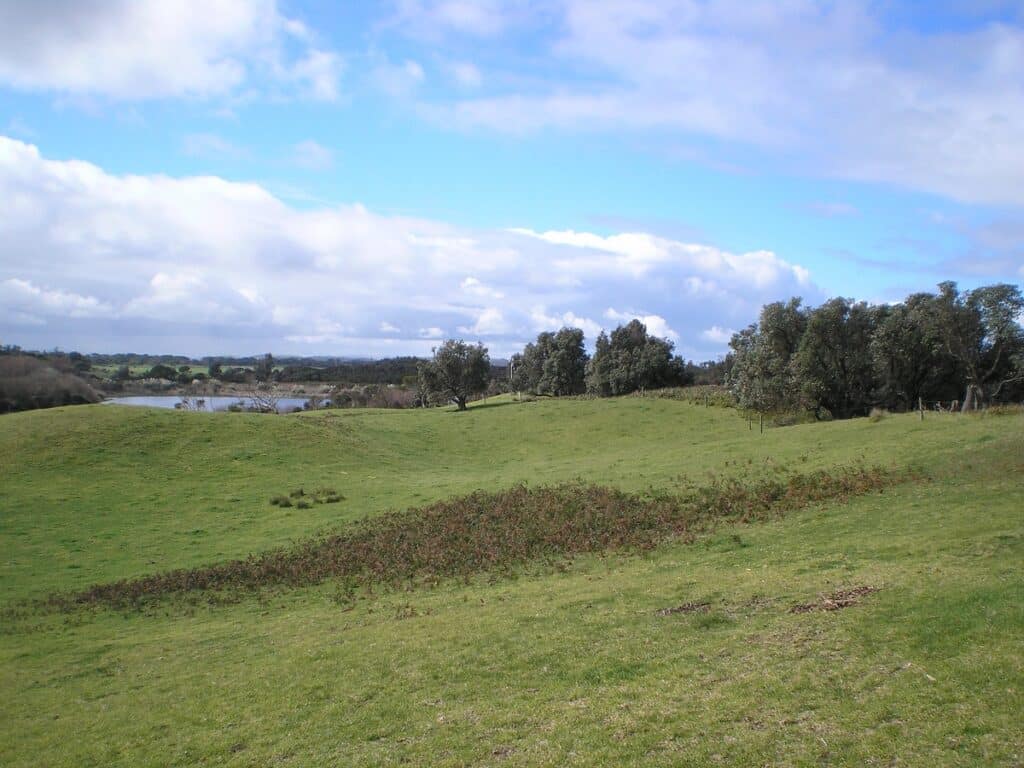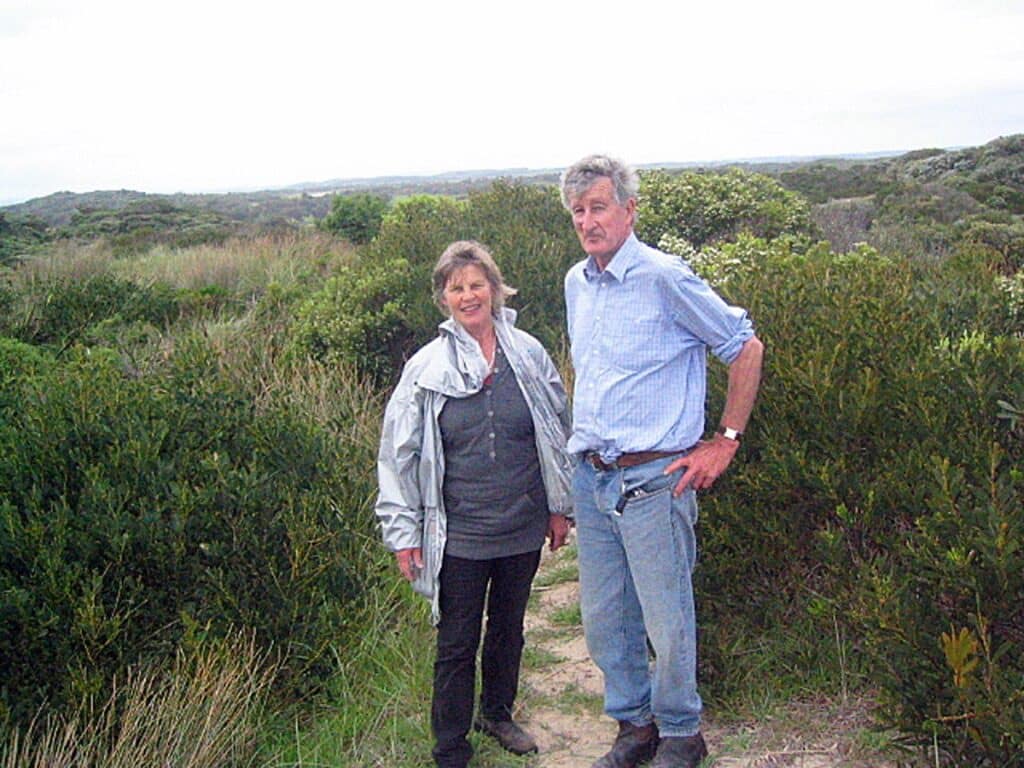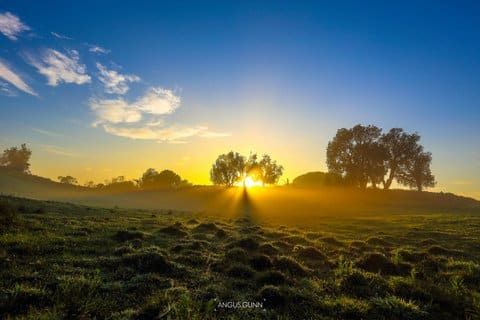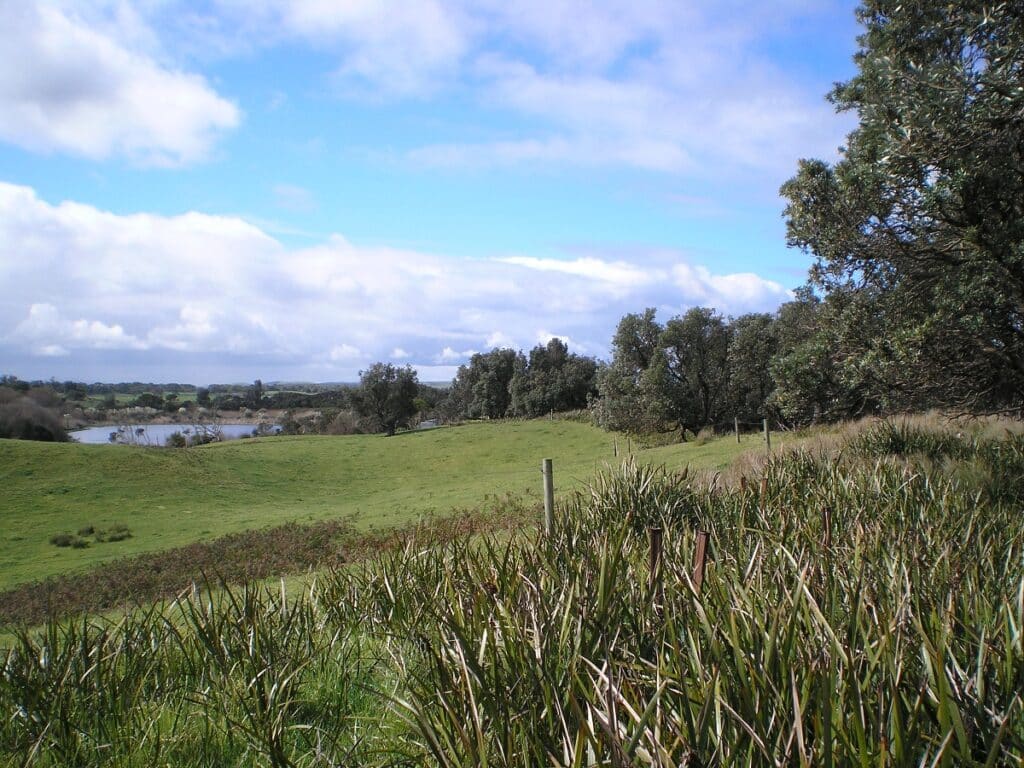Windabandi is a 44.95 hectare sanctuary located approximately 33 km from Inverloch. The sanctuary is protected for conservation purposes on title with the Department of Sustainability and Environment in Victoria, and forms part of a larger habitat area through direct linkages with the Cape Liptrap Coastal Park and Fishers Lake.
Windabandi includes 16.2 hectares of habitat that is divided into seven reserves, five consisting of vulnerable Coastal Banksia woodlands, one comprised of coastal dune scrub, and one of wet swamp. The area is significant for the conservation of the endangered Coast Ballart (Exocarpos syrticola). The owners have undertaken extensive bush restoration with the Victorian Department of Sustainability and Environment (now DELWP), Greening Australia, and the South Gippsland Landcare network. Ian and Mandy Gunn aim to protect their habitat through extensive revegetation to create and maintain a wildlife corridor and restore biodiversity values to the property.
A wide range of wildlife is found on the sanctuary including eastern grey kangaroos (Macropus giganteus), bare-nosed wombats (Vombatus ursinus), swamp wallabies (Wallabia bicolor), southern brown bandicoots (Isoodon obesulus), bush rats (Rattus fuscipes), swamp rats (Rattus lutreolus), agile antechinuses (Antechinus agilis), common brushtail possums (Trichosurus vulpecula), bobucks (Trichosurus cunninghami), ringtail possums (Pseudocheirus peregrinus), eastern banjo frogs (Limnodynastes dumerilii) and native snakes.
A variety of birdlife is also present including white-bellied sea eagles (Haliaeetus leucogaster), hoary-headed grebes (Poliocephalus poliocephalus), blue-billed ducks (Oxyura australis), black swans (Cygnus atratus), eastern whipbirds (Psophodes olivaceus), grey shrike-thrushes (Colluricincla harmonica) and white-browed scrubwrens (Sericornis frontalis).
This sanctuary is featured in Wildlife Lands 18!
Windabandi Sanctuary preserves 100 acres of unique and rare coastal banksia woodland, a bioregion restricted to coastal locations on secondary or tertiary dunes behind coastal dune scrub. The area is usually dominated by a woodland overstorey of coastal banksia over a medium shrub layer, with some very old trees when we see the slow growth rate in the prevailing wind and salt. The understorey consists of a range of herbs, sedges and shrubs.
We’ve owned this property for around 11 years, and have planted over 5,000 trees and shrubs. Where cattle used to roam are now areas of thick growth along the wooded crests of the sand dunes that form the landscape, with all sorts of plant life now prolific. A Victorian government covenant protects the sanctuary, requiring us and future owners to respect, maintain and manage the property’s natural values. There’s also a large fresh water lake which receives run off from surrounding hills as well as an extensive area of coastal dune scrub between us and Cape Liptrap National Park.
Several years ago the lake overflowed during heavy rain, forming a secondary wetland at the other end of the property behind the dunes. We’ve now been here long enough to witness the natural cycles of drought and flood, one realisation being how many weeds are carried in water. Birdlife is prolific due to fresh water and proximity to the ocean. Last year we found a nest with two very large baby wedge-tailed eagles; we have nesting swans, many varieties of ducks, herons, hawks and plenty of small bush birds – especially around the house where our native garden provides shelter and nesting areas. On a recent spotlighting drive around the property with grandchildren agog in the back seat we saw 15 wombats, who love our sandy soil, eastern grey kangaroos, swamp wallabies and echidnas. We also have snakes, bluetongues and occasionally turtles and goannas.
We love this property with its variety, its sense at times of a Garden of Eden and at others its awful gales and Antarctic weather conditions.












